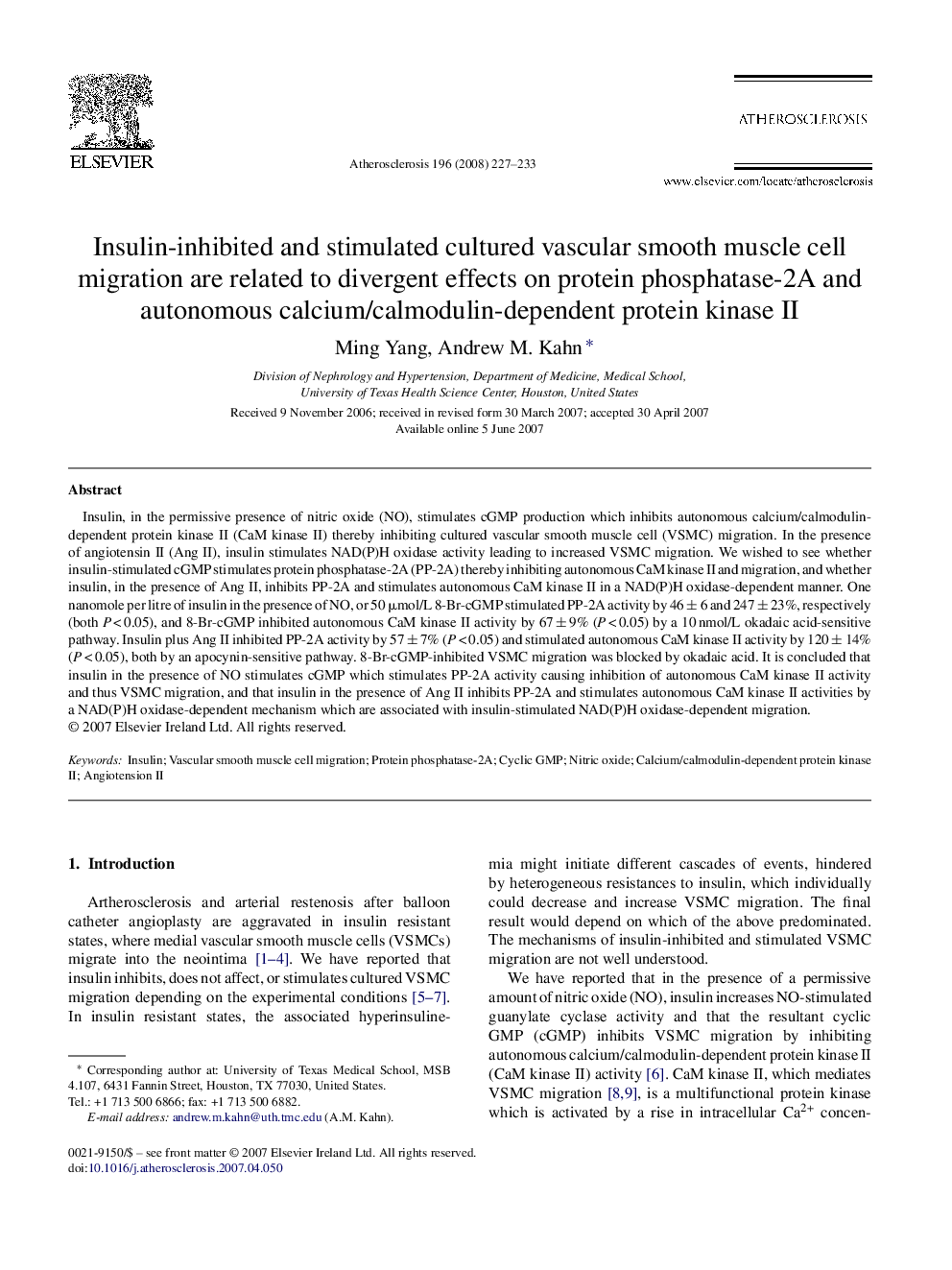| Article ID | Journal | Published Year | Pages | File Type |
|---|---|---|---|---|
| 2894514 | Atherosclerosis | 2008 | 7 Pages |
Insulin, in the permissive presence of nitric oxide (NO), stimulates cGMP production which inhibits autonomous calcium/calmodulin-dependent protein kinase II (CaM kinase II) thereby inhibiting cultured vascular smooth muscle cell (VSMC) migration. In the presence of angiotensin II (Ang II), insulin stimulates NAD(P)H oxidase activity leading to increased VSMC migration. We wished to see whether insulin-stimulated cGMP stimulates protein phosphatase-2A (PP-2A) thereby inhibiting autonomous CaM kinase II and migration, and whether insulin, in the presence of Ang II, inhibits PP-2A and stimulates autonomous CaM kinase II in a NAD(P)H oxidase-dependent manner. One nanomole per litre of insulin in the presence of NO, or 50 μmol/L 8-Br-cGMP stimulated PP-2A activity by 46 ± 6 and 247 ± 23%, respectively (both P < 0.05), and 8-Br-cGMP inhibited autonomous CaM kinase II activity by 67 ± 9% (P < 0.05) by a 10 nmol/L okadaic acid-sensitive pathway. Insulin plus Ang II inhibited PP-2A activity by 57 ± 7% (P < 0.05) and stimulated autonomous CaM kinase II activity by 120 ± 14% (P < 0.05), both by an apocynin-sensitive pathway. 8-Br-cGMP-inhibited VSMC migration was blocked by okadaic acid. It is concluded that insulin in the presence of NO stimulates cGMP which stimulates PP-2A activity causing inhibition of autonomous CaM kinase II activity and thus VSMC migration, and that insulin in the presence of Ang II inhibits PP-2A and stimulates autonomous CaM kinase II activities by a NAD(P)H oxidase-dependent mechanism which are associated with insulin-stimulated NAD(P)H oxidase-dependent migration.
